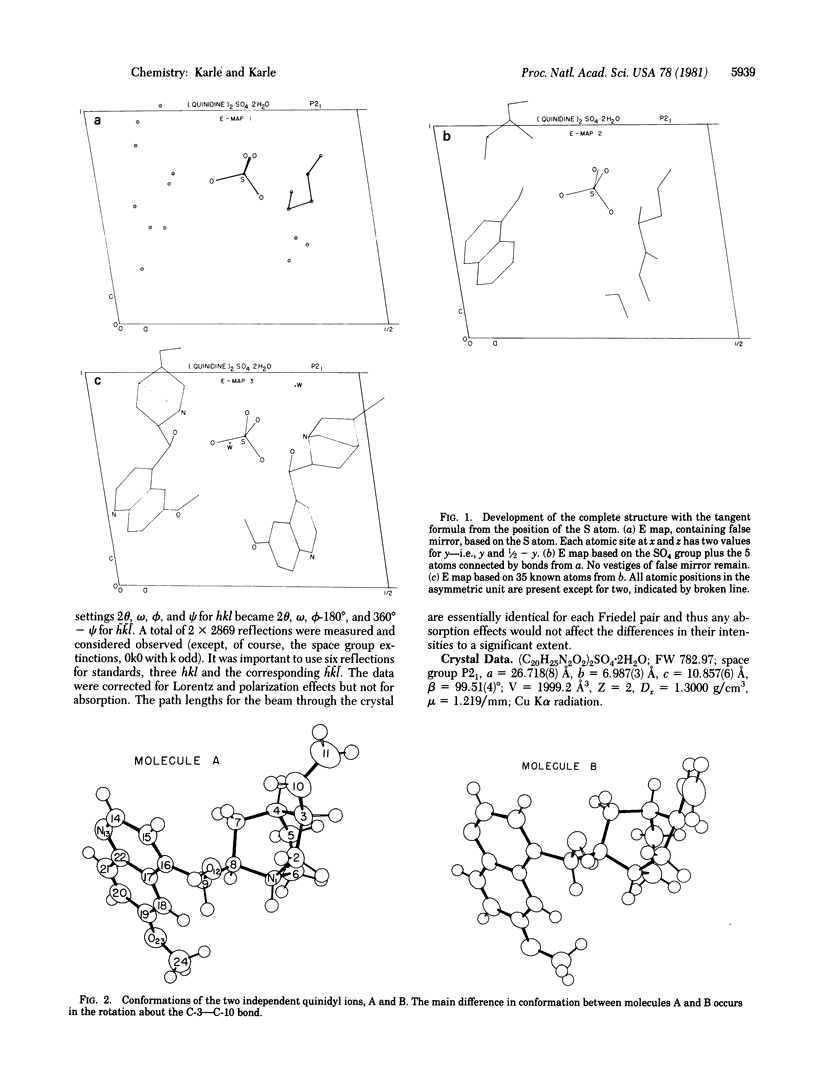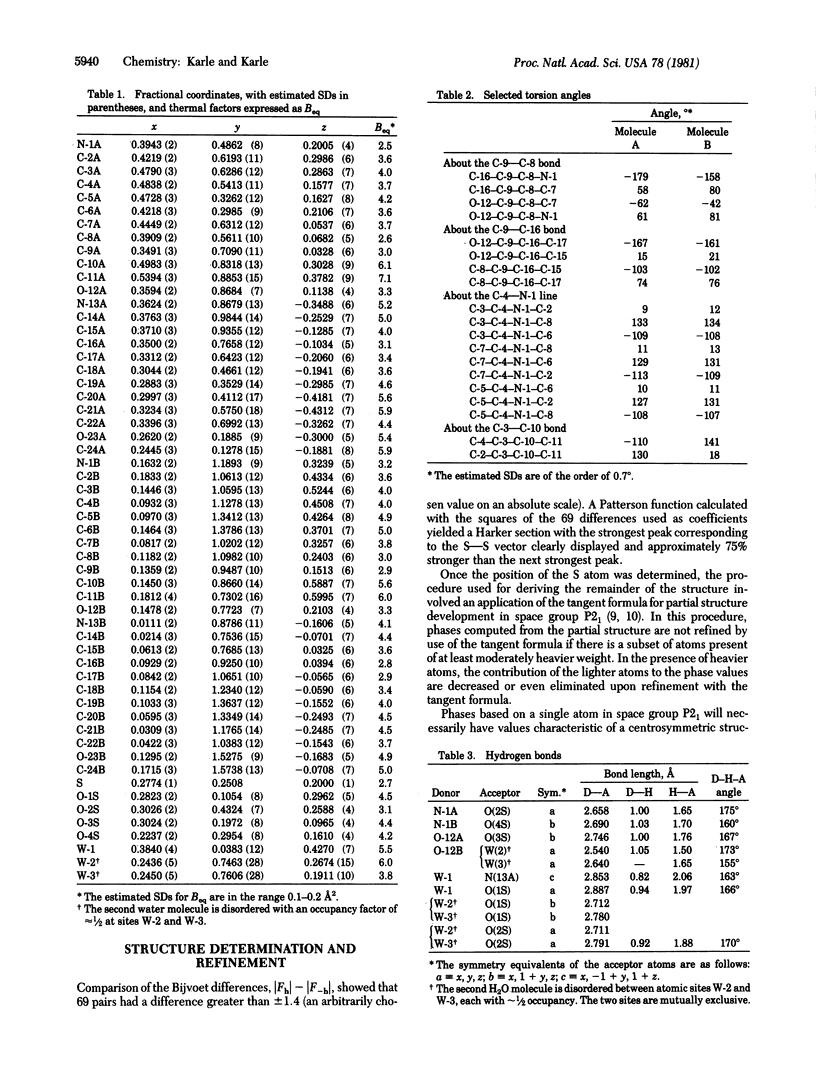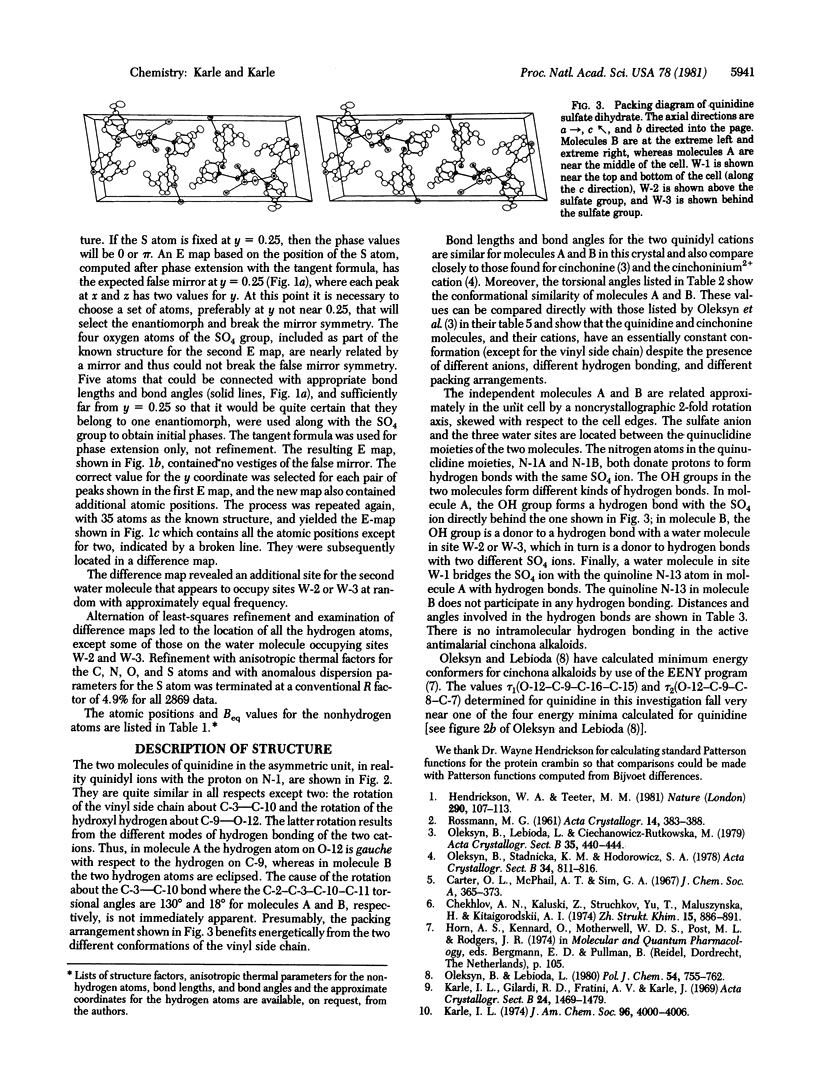Abstract
A Patterson-type map computed with Bijvoet differences squared as coefficients, (ǀFhǀ - ǀF-hǀ)2, as recommended by Rossmann, readily yielded the position of the S atom. The experiment was performed with Cu Kα radiation which is far from the absorption edge for sulfur. The coordinates of the remainder of the 54C, N, and O atoms were derived by means of partial structure development by use of the tangent formula. The latter was used only to effect phase extension, not phase refinement. A main purpose of this experiment was to reaffirm, as first shown in the investigation of the protein crambin by Hendrickson and Teeter, that, in the presence of a large number of lighter atoms, sulfur atoms can be located by use of anomalous dispersion at wave-lengths far from the absorption edge. The space group is P21 with a = 26.718(8) Å, b = 6.987(3) Å, c = 10.857(6) Å, and β = 99.51(4)° and contains two quinidyl ions, one sulfate ion, and two water molecules per asymmetric unit. The conformations of the two independent quinidyl ions differ mainly in the torsional angle of the bond between the vinyl side chain and the quinuclidine moiety. The R factor is 4.9% for all 2869 data.
Keywords: x-ray analysis, tangent formula, Bijvoet differences, hydrogen bonding, packing
Full text
PDF



Selected References
These references are in PubMed. This may not be the complete list of references from this article.
- Karle I. L. Conformation of the lithium ion complex of antamanide, a cyclic decapeptide and ion carrier, in the crystalline state. J Am Chem Soc. 1974 Jun 12;96(12):4000–4006. doi: 10.1021/ja00819a044. [DOI] [PubMed] [Google Scholar]


